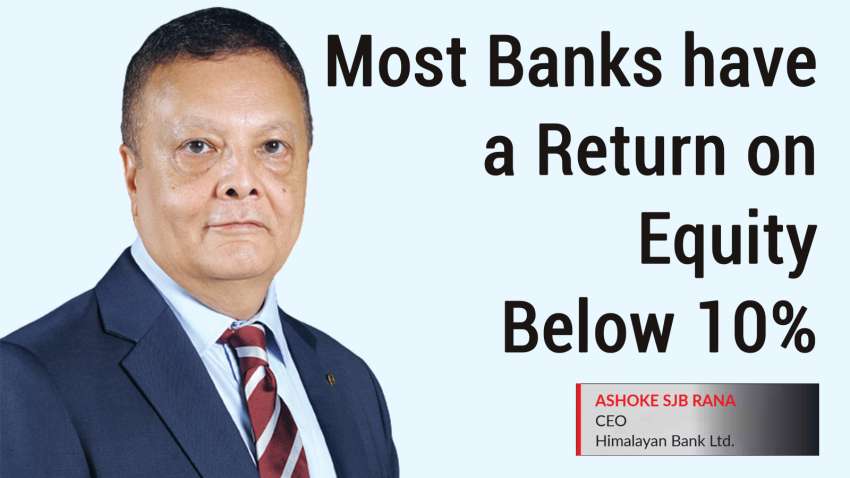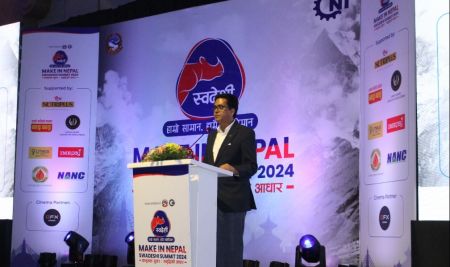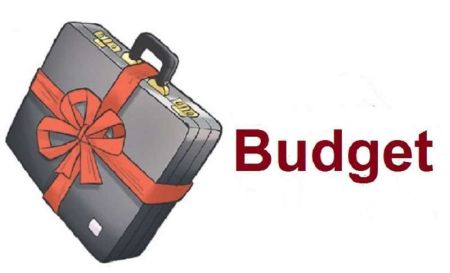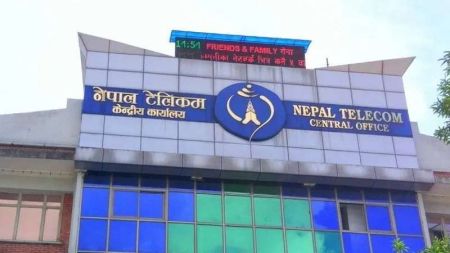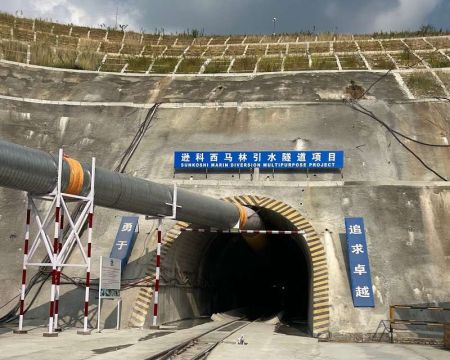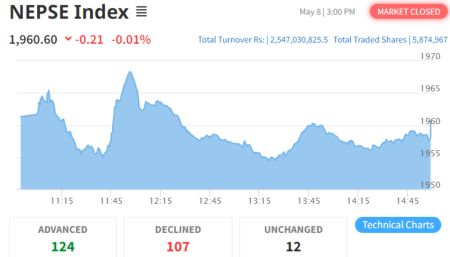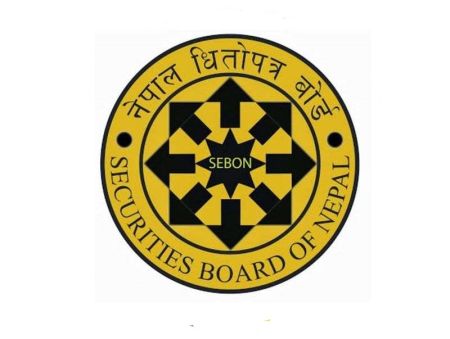Ashoke SJB Rana is the CEO of Himalayan Bank Ltd. (HBL) and Advisor of Nepal Bankers Association (NBA). In an interview with Madan Lamsal of New Business Age, the seasoned banker talked about the performance of HBL after its acquisition of Civil Bank Ltd and the overall banking industry. Excerpts:
How has been the performance of HBL following the acquisition of Civil Bank?
When we acquired Civil Bank Ltd, the economic situation in the country was not favourable. Our balance sheet was under stress, and there was a shortage of liquidity. I don't believe we were the only bank facing this issue. One positive outcome of the acquisition is that we gained approximately 800 new employees. Historically, our growth had often been hindered by a lack of a qualified workforce. Additionally, we acquired new branch offices. Prior to the merger, HBL had the fewest bank branches among banks in Nepal, second only to Standard Chartered Bank Nepal Ltd. Now, we operate around 170 branch offices across the country.
Many say banks are seeing problems in harmonising work culture after merger. What was your experience?
We had also heard similar concerns, but we have not encountered such problems yet. It is possible that we have observed some issues with credit standards. HBL had a more corporate focus, whereas Civil Bank was more inclined towards SMEs. If we examine the banking industry as a whole, we can see that SMEs are facing some challenges. Given that our SME portfolio is relatively larger, it will require some time and effort to effectively manage these issues. Fortunately, the central bank is aware of these challenges. During the COVID-19 pandemic, lenders were provided with additional funds. However, problems have arisen because some lenders did not utilise these funds effectively in their business operations. Aside from these issues, we have not encountered any other significant problems. The staff from Civil Bank whom we have brought on board are valuable assets to us. They have proven to be skilled and capable contributors to our organisation.
How true were the rumours true that Civil Bank extended loans indiscriminately to bolster its portfolio once merger talks were initiated?
We felt that the management of Civil Bank was burdened with overly ambitious targets set by the board of directors. It put the management under pressure. To meet these targets, it appears that they may have extended loans by lowering their credit standards. This phenomenon was not unique to Civil Bank Ltd but was observed in other banks as well. The central bank has repeatedly been telling the board of directors and CEOs to not subject the management to excessive pressure, and give realistic targets and align credit growth with the growth objectives outlined in the monetary policy.
There have been claims that Civil Bank was offered a more favourable swap ratio during the merger. What is your perspective on this?
The swap ratios offered to Bank of Kathmandu by Global IME and Mega Bank by Nepal Investment Bank Ltd did exert some pressure on our decision-making process. It's worth noting that the Nepal Rastra Bank (NRB) had imposed penalties on us following the breakdown of our merger with Nepal Investment Bank Ltd. Consequently, we were under significant pressure to identify a suitable merger partner. Initially, we had calculated the swap ratio at approximately 100:72. However, this ratio was adjusted to 100:82 to account for the dividends issued to shareholders. There were also speculations that we had not conducted a due diligence audit (DDA), but this is not accurate. While it's true that the DDA was not conducted in great depth, it was due to the fact that both banks' balance sheets were under review by the central bank for approval. There was also some pressure for provisioning. Civil Bank was also in the same situation. When the external auditor showed a loss of around Rs 1.7 billion, we were understandably concerned. However, given that we were already in the process of moving forward with the merger, our primary focus was on strategizing how to address these challenges effectively.
HBL's merger policy was initiated relatively late compared to other banks. Was this delay due to your foreign partner's reluctance to pursue a merger, or were there other factors at play?
It has nothing to do with the policy of our international partner. In fact, Habib Bank was prepared to exit the market even before the onset of the COVID-19 pandemic. Prior to that, we had presented a proposal to pursue a merger with Ace Development Bank Ltd. However, our board of directors rejected this proposal. During that period, our board had not yet taken any significant steps toward mergers and acquisitions. There were also discussions about the British government's development finance institution, CDC, potentially acquiring shares of Habib Bank. This prospect generated considerable excitement, as having CDC as our strategic partner would have been a valuable asset. Unfortunately, the board also rejected this proposal which put us under pressure. Despite being one of the oldest private sector banks in Nepal, we found ourselves shrinking in terms of capital, workforce, and branch network compared to newer banks that had grown stronger through mergers. This prompted us to pursue merger talks with Nepal Investment Bank Ltd.
What are HBL’s future plans?
Our primary focus moving forward is to consolidate our balance sheet. The decision to merge with Civil Bank was strategic, as both banks were utilising the same core banking system. Notably, Civil Bank possessed a proficient IT team, a valuable asset considering the growing importance of digitalization in the banking industry. Everything is going digital now. Temenos upgrading T24 to Transact. We are also in the process of employing their front-end solution, Infinity. The board has given us the green light for this initiative and has assured us the necessary resources. We will go into implementation by January. We are migrating from Cut-over to R22-24. By this fiscal year, we will transfer to the new digital platform. We will then be well-positioned to facilitate digital onboarding and operate more like a neo bank.
HBL’s exposure to SMEs is very low compared to other banks. What are your plans for the SME sector?
One of the reasons why we chose Civil Bank as a merging partner was because of its high exposure to SMEs. About 70% of our customer base was corporate, and the remaining 30% was SMEs. Civil Bank’s exposure was exactly opposite than ours. We felt a merger with Civil Bank would give us that synergy. After merger, we now have sufficient manpower to penetrate further into SMEs. The adoption of digital systems is also aimed at focussing the SMEs.
According to news reports, loan recovery is posing challenges in the SMEs sector. How do you assess this situation?
In light of various adverse events such as the earthquake, blockade, and the ongoing impact of COVID-19, we found corporate customers resilient due to their access to extra resources. However, SMEs often find themselves resource-constrained and are more vulnerable during economic downturns. We have anticipated the need for some provisioning in this regard. We believe that SMEs will regain their stability as the overall economic situation improves. Currently, non-performing loan (NPL) levels in banks are relatively high, which is a natural consequence of the economic slowdown. I think banks should examine the SMEs' business models and consider loan restructuring where necessary.
In our three-decade history, we have never held non-banking assets exceeding six to seven ropanis. However, this situation has changed as banks have had to write off non-performing loans and take possession of properties to strengthen their balance sheets. It has recently come to our attention that the land-holding ceiling also applies to banks. The Nepal Bankers Association (NBA) has raised this issue with the Nepal Rastra Bank (NRB). We have learned that the issue can be resolved only by amending the existing laws. We should try to resolve the issues with SMEs through loan restructuring or other means. I don't think the banks should go on taking over collateral like they are doing today.
HBL has relatively low loan exposure to the hydropower sector? Is it because the Pakistani promoters were not willing to invest in this sector?
The Pakistani promoters had nothing to do with it. Our board of directors had taken a policy that projects should first have equity investment and that loan financing can be done only after the equity is exhausted. Because of this policy, hydropower promoters weren not very enthusiastic to do business with us. Also, there was a compliance issue. The government had waived anti-monetary laundering (AML) safety in the hydropower sector. We perceived there is a great risk in such investments. That is why we took a policy of bringing on board only the investors which we know and on whom we could do due diligence. Because of this, our loan exposure to the hydropower sector is relatively low. But we are keeping this sector in priority. We still have not met the target set by the central bank. But our loan flow to other priority sectors is comparatively higher for example in the agriculture sector.
How do you see the emergence of private equity and venture capital investors?
We welcome all investors. With these alternative financing, big projects will no longer have to rely on banks only. Established hydropower companies can launch bonds to clear their bank debts. Alternative financing is needed because bank financing alone might not be sufficient for mega infrastructure projects. In the end, we need to further develop the bond and capital market. We should have a country rating, the central bank also should get rated. Rating agencies have just come up. The central bank has made it mandatory for companies seeking to raise money to first get a rating. This way, investments will increase gradually. In the future, we can form consortiums with alternative financing instruments, not only the banks.
Data shows Nepal is seeing an economic slowdown. While foreign exchange reserves are expanding, banks are seeing a shortfall of loanable funds and the interest rate is not coming down. Why is all this happening?
I think there is a misunderstanding. There is inflation in the global market. The first goal of the central bank at the moment is controlling inflation. For that, the interest rate should go up. This is the only tool adopted worldwide to rein in inflation. But in the context of Nepal, a narrative has been built that banks are making excessive profits and not bringing interest rates down. If you look at Europe and the US, central banks there are jacking up interest rates. Inflation had come down a bit in Nepal earlier, but is again rising. Our economy needs high interest rate policy at the moment.
When our foreign exchange reserves were depleting and also due to spillover impact of Sri Lanka, the central bank and the government took preemptive measures and restricted imports of certain goods. It dampened demands and now our foreign exchange reserves have come to a desired level.
People often blame the International Monetary Fund (IMF) for the problems that the economy is seeing. It was the finance ministry that signed the agreement; the central bank is a mere executing agency. Monetary tightening to contain inflation is the condition accepted by the government. The central bank is only executing the policy. It is not the fault of the central bank and the banks. The prescribed policy taken by economists all around the world is to raise rates to contain inflation. We have a liquidity issue too. Because the average CD ratio of most of the banks would come at around 87% when some outliers are removed. This shows banks are not in a comfortable liquidity situation like others are saying. The finance minister also held talks with us to discuss liquidity issues and bank rates. He enquired whether reinstatement of local unit funds parks in banks would ease liquidity situation and help bring down rates. We told him the liquidity issue still persists because saving accounts have not expanded. Most of the money is parked in fixed deposits, and banks’ portfolios are still at risk. So the interest rate outlook does not look so good.
The return on equity and distributable profit of banks is on the decline. Last year, the average return on equity was 12% on average. Most banks had a return on equity below 10%. Raising rates was a compulsion for banks.
Some banks brought cheaper funds from foreign markets to address liquidity crunch. Did HBL also bring funds from the foreign market?
We did not bring because the foreign exchange risks were so high even after hedging. The market has transitioned from LIBOR to SOFR. The rates have gone much higher now. At that time, the rate was at around 3% and we were hopeful of getting the funds at 8-9% after adding 5% for hedging and 1.5% for pegged risks. It is much higher now. Before that, there were talks of the Asian Development Bank and IMF issuing local currency bonds. Maybe we should have pursued that. I don’t think Nepali banks can bring international funds now as their tools to hedge are not very robust.
What about the interest rate cartel of Nepal Bankers Association?
There was a time when the NBA used to fix the upper limit for interest rates on deposits. It did that when the economic situation was good. Now, banks are free to set rates on their own. The central bank has now set a band for saving and fixed deposits. This is preventing the banks from fixing rates freely. Likewise, we can not bring down or raise deposits by 10% of our average deposit rates. It is looking like a cartel because of all this. The NBA abandoned the interest rate cartel three months ago.
Do you think the economy is seeing these problems because the relation between the finance ministry and the central bank has deteriorated?
Not only between the finance ministry and the central bank, the lack of coordination among government agencies is clearly visible. We talked earlier about land holding ceiling for commercial banks. It is again related to the finance ministry. The finance secretary is on the board of the central bank, and the central bank is the economic advisor of the finance ministry. Everything is politicised in Nepal. Ruling party wants to keep its people in key places. If they can’t get to do that, they start thinking that the officials there are against the government. This shouldn’t be the situation. Central bank is an apolitical organisation and people there have the experience of many decades. That is why it is easier for us to work with them. Politicising the NRB won’t do any good.
How do you visualise the Nepali economy and the performance of the banks in the future if the situation continues further?
It is said that we come better from difficulties. The management knows haphazard lending will land us in trouble. I think banks will come back stronger. Central banks around the world are raising capital requirements given the different risks, including climate risks, in the economy. If the issues of risks are addressed, we will become better capitalised and become stronger. The onus on stimulating the economy is on the government. The main objective of the monetary policy is controlling inflation, achieving financial stability and facilitating payment systems. It cannot drive the economy. It is the responsibility of the government. When inflation rises, the central bank raises rates which nobody likes. We can see this conflict everywhere. When Trump was in office in the US, he used to openly criticise the Fed Governor for not supporting his government. The only way out of the problem is that the government should make mass spending. Otherwise, we cannot come out of this.
Digital banking is the buzz word in the banking industry. Where does HBL stand in terms of adoption and what are the associated risks?
Digital banking helps banks to on board the customers. Customers can apply for loans without visiting bank branches. The other aspect is related to payment which attracts certain fees. Transactions through QR Code are free so far. When a fee is levied on it someday, it could draw some backlash from consumers. When banks talk about digital banking, it is about making delivery of banking services to people easier. For others, it is only about processing payments and transfers only.
There are some associated risks as you rightly pointed out. I do not know about others, but we are not sending OTPs and text messages. Our mobile banking is bound to the device. Now, we are upgrading the system by also including biometric. Cases of frauds are rising because of OTPs, SMSes and password sharing. There are other secured ways like two factor authentication. We should go for them.
How is HBL different from other banks?
We are one of the oldest financial institutions in the country. Likewise, we were the first to launch innovative products like ATM cards and credit cards. I think we are the leader in the card business. We accept Visa, MasterCard, UnionPay, JCB, AmericanExpress, Discovery and RuPay. We are the only ones accepting all these cards. We are an easy bank to deal with as we are offering good service to depositors. For borrowers too, we don’t put them in difficulty. When they default on loans, we do not publish details of borrowers in newspapers. Historically, our non-banking assets never crossed Rs 5-6 million in three decades. We do not say that we would double the profit overnight, we are here for the long run. I have heard people saying HBL is playing Test cricket, while other banks are playing T20.
The people in our board of directors are more or less the same for the past three decades. We also have an experienced workforce. Over the past three decades, we have distributed Rs 7.3 billion as cash dividend and Rs 13.2 billion as bonus shares. It is a very good return for our shareholders.
Where do you want to take HBL in the next five years?
We have learnt a lot from Civil Bank’s acquisition. We might think of more acquisitions for growth in the future.
Before concluding, do you think the policy of merger pursued by the central bank was good?
Frankly speaking, a bank like ours, with a history of three decades, is now in the 11th-12th position because younger banks surged ahead of us by actively pursuing merger and acquisition. The paid-up capital requirement of Rs 8 billion made all the banks equal. It was the biggest problem. As an older bank, we had higher lending capacity compared to younger banks with small capital. These younger banks would have grown gradually, gaining valuable experiences on the way. But suddenly they are a big institution. Some pursued reckless lending to expand their business portfolio. If you look at numbers, private sector debt in Nepal is nearly 90% of the GDP which you can’t find anywhere else. The central bank is finding difficulty in reining in banks. Private sector grew because of bank lending. Now, they are saying banks are not lending. It is not a good situation to have private sector debt at nearly 90% of GDP. It should be down to somewhere around 40-50% to be sustainable. Despite all this, we are still 6th-7th in terms of size. We don’t have sufficient capital to grow aggressively. Rights issue can be one option but the central bank discourages it. This is because promoters in the past met the new paid-up capital requirement by taking loans. Hence, the only way to grow is to acquire or undergo merger. I think, in the long term, merger was a good policy.


